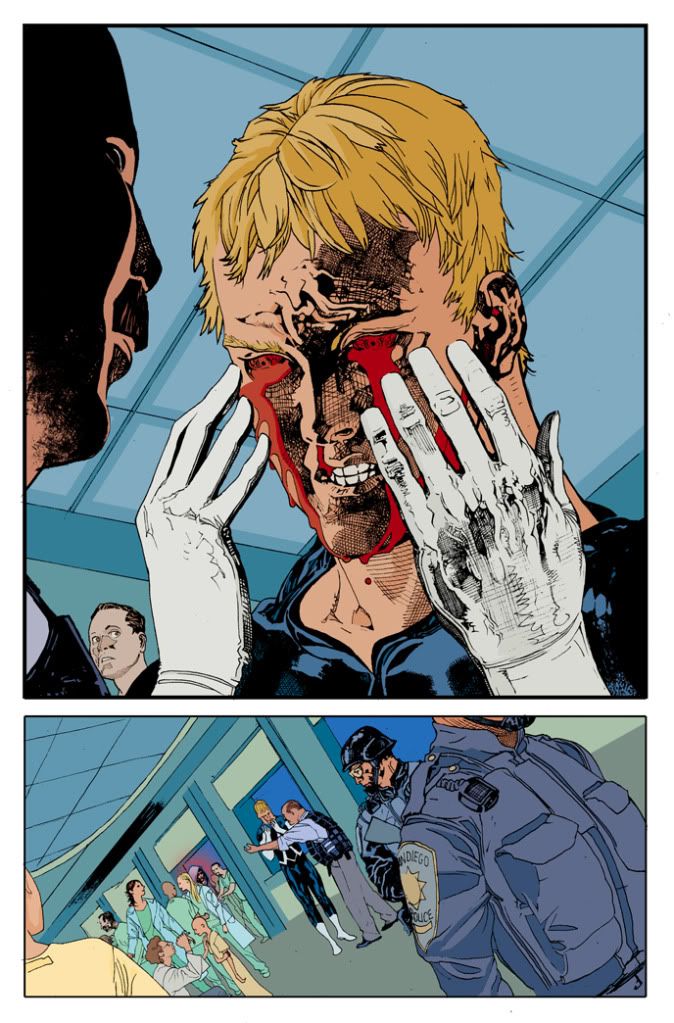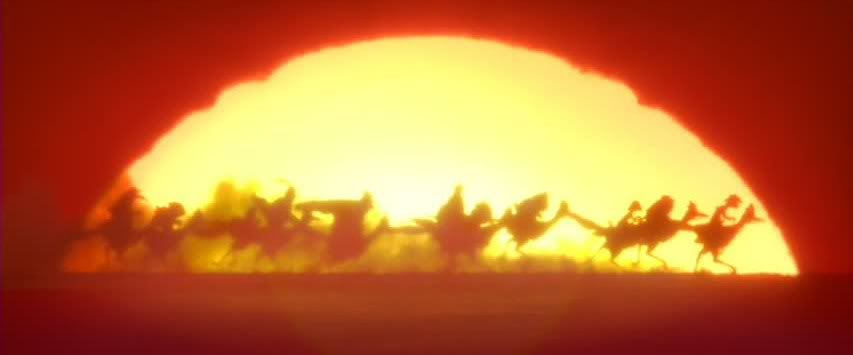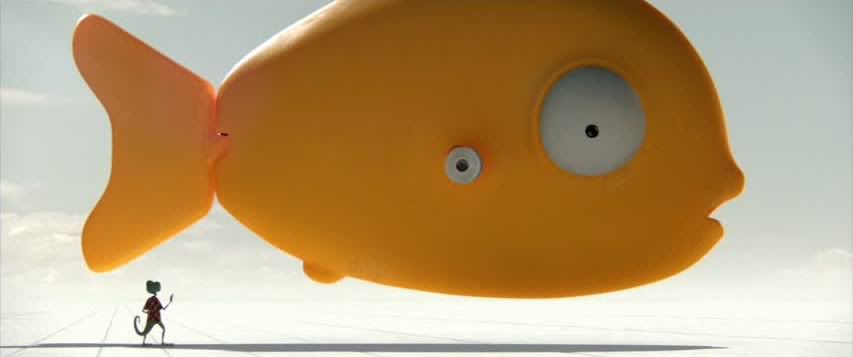
Beginning this month, DC Comics is completely rebooting its entire line of comics, starting every comic over from issue #1 and re-imagining their characters, not entirely from scratch but definitely making some changes. It's a move intended to bring in new readers to the continuity-heavy world of superhero comics, and since I've only occasionally read DC superhero comics myself, I figured this was a good time for me to check out what they have to offer. This month DC is unfurling 52 new issue #1s, and I'll be reading all of them and briefly reviewing them here, week by week. This week, I review the 13 first week titles, plus
Justice League #1, which came out last week as the debut of the new line. I rank them below from best to worst; by my count there were 3 very good DC comics this week, a few more that were variably enjoyable and/or promising, and then some mediocre junk. Anybody else following this initiative?
1.
Animal Man #1 - This book is just fantastic. I wouldn't be surprised if this winds up being the best out of all 52 comics when this month is over. It's a mix of family drama, horror, and superheroics, balancing all these different tones without seeming all over the place. Writer Jeff Lemire packs a lot into 20 pages, economically reintroducing this character, his family, and the themes and conflicts that will drive his story. And the art, by Travel Foreman, is amazing, especially since it shifts fluidly from sketchy domesticity to punchy superhero action to surrealist, horrifying dream sequences. This looks more like an indie book than a big DC superhero title, so the aesthetic is especially striking and invigorating in this high-profile context. The art is so attuned to the nuances of the storytelling, and the style morphs to fit each new wrinkle perfectly. This is a must-read book, one that already seems poised to match the high standard of Grant Morrison's classic run on this title.
2.
Swamp Thing #1 - Definitely the second-best book this week, though not remotely in the same jaw-dropping way as
Animal Man. Instead, this is just a solid introduction with some very good storytelling by Scott Snyder. I'm not very clear on what exactly is going on with this character, not having followed the pre-reboot DC universe, and in that sense this book doesn't seem as new-reader-friendly as most of the others. The character's history is left pretty vague and confusing, maybe deliberately since I sense that a big part of the book's early arc is going to be figuring out just what's going on with Alec Holland. But the essence of the character and his status quo come across and there are some great sequences of horror that really make me excited to see where this is heading. The whole scene where the big threat is revealed is chilling and creepy and genuinely frightening; I won't spoil it but it's true horror brilliance, wonderfully visualized by Yanick Paquette.
3.
Action Comics #1 - I really dig Grant Morrison's new take on Superman as a populist crusader with an attitude, definitely a fresh perspective on the character. It's obvious that Morrison is deliberately taking a different approach from the mythic boy scout of his fine
All-Star Superman miniseries. Even Superman's costume feels more approachable and human. The first half of the issue really pops as it introduces this new Supes in action. The second half gets a little jumbled and isn't as strong, but overall this is still quite good. It's also the most straightforward comic I've read from Morrison in a while.
4.
Justice League #1 - This issue is actually from last week, since it was the debut of the new DC line. It's pretty good, nothing mindblowing or anything, and I don't know why the debut of a whole new reboot wasn't made more exciting, but it's still not bad. Mostly based around some amusing banter between Batman and Green Lantern, and then the badass new Superman shows up at the end. It's more a teaser than anything else and it works in that sense, but it's not much of a story. This issue takes place five years earlier than most of the other reboot titles (with the exception of
Action Comics) so it's meant to show the early days of the new status quo, when the heroes are just getting to know each other.
5.
Batgirl #1 - Just a fun, basic superhero story with a lot of heart and emotional complexity. I like that in restoring Barbara Gordon to the Batgirl costume, they've kept her history from Alan Moore's
The Killing Joke, so that trauma continues to haunt her even though she's regained the use of her legs. That darkness is contrasted against a refreshing enthusiasm in the dialogue and narration that's really infectious, and makes her seem like a girl who's just happy to be out kicking ass. Not exactly substantial, but pretty enjoyable nonetheless.
6.
Stormwatch #1 - This is visually pretty interesting. Every few pages there's some slightly nutty cosmic concept that provides a very striking image. (Although the character drawings are a little stiff.) The problem is that the characters are all so flat and undistinguished, and writer Paul Cornell seems to know that a lot of readers will be unfamiliar with these characters, so virtually all of the dialogue is exposition and explanation. Lots of characters talking about themselves, explaining their powers, saying things to each other that they really have no reason to say except to explain something to the reader. That could get better now that the 1st issue is out of the way, but it still suggests a pretty unimaginative sensibility that jars against the visual imagination on display here. I'll check out a couple more issues of this to see which direction it heads.
7.
OMAC #1 - A book that's totally in love with Jack Kirby. Not even a pinch of originality here, but it's fun enough, lots of Kirby dots everywhere, lots of superpowered enigmas pummelling each other. Entertaining and fluffy as hell. I imagine the Kirby pastiche will get old fast so I'm not sure how much longevity there is in this concept, but as a single issue it's a blast.
8.
Detective Comics #1 - Pretty standard, even generic Batman stuff. There's lots of Frank Miller-style "I am the terror that flaps in the night" overwrought "gritty" writing. Not terrible, but not especially interesting either. And the Joker isn't funny, which is always a bad sign. The last page is nicely creepy, though.
9.
Batwing #1 - Even more standard and generic than
Detective Comics, despite this being about an African Batman, a protege of Bruce Wayne. Not exactly bad, but there's not much to it. It's one of those books where it's hard to point to what's missing except, well, anything that would differentiate it from countless other nondescript hero comics.
10.
Justice League International #1 - I guess this is supposed to be the lightweight, fun, funny book where a bunch of D-listers hang out. The problem is that while it's certainly lightweight, it's not fun or funny at all, so it's pretty lame and pointless. Really bad dialogue, really bad all around.
11.
Static Shock #1 - Yet another really boring one. It's trying for the light-footed teen superhero style of early
Invincible, but its attempts at hip dialogue seem forced and the wisecracking tone doesn't produce any actual humor.
12.
Green Arrow #1 - Not sure what to say about this other than it sucks. Totally generic, every line of dialogue is a clunkily delivered cliche, the art is static and bland, and all the Youtube references are obvious, desperate grabs for relevance that fall far short of the mark. This is somebody's laughable idea of "media criticism" I guess.
13.
Men of War #1 - This. is. so. goddamn. boring. There were 2 stories in this, both straightforward war stories full of all the clichés you'd expect. I got through the first but my eyes started to glaze over just thinking about reading the second.
14.
Hawk and Dove #1 - There might be 2 panels in this whole thing where someone isn't grimacing with that same damn I'm-squeezing-out-a-poop-right-now expression on their face. Actually, Hawk is the one who always looks like that. Dove, with her constantly gaping mouth, looks either perpetually surprised or like she's always ready to give a BJ. Rob Liefeld, man. This is terrible.











